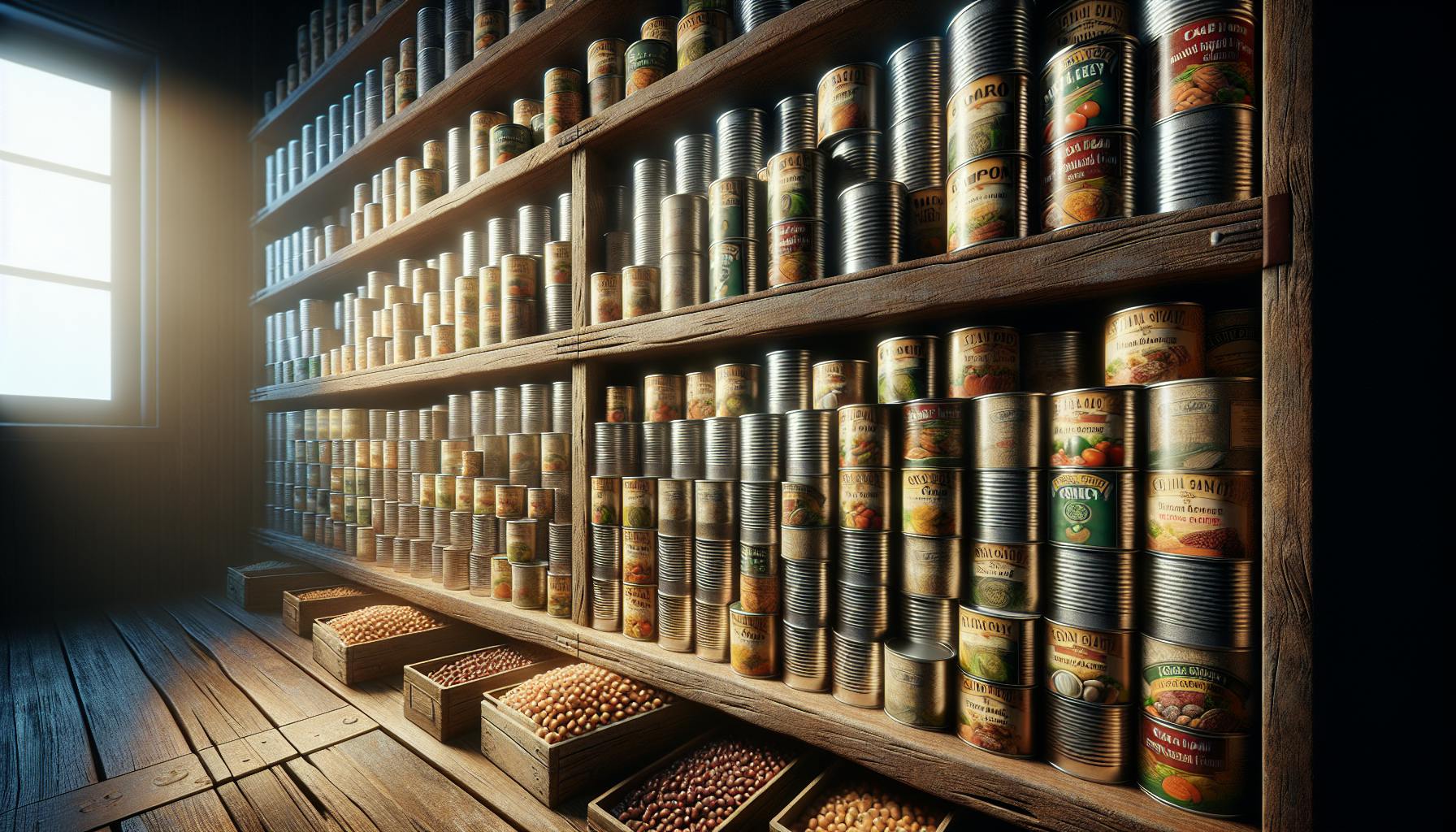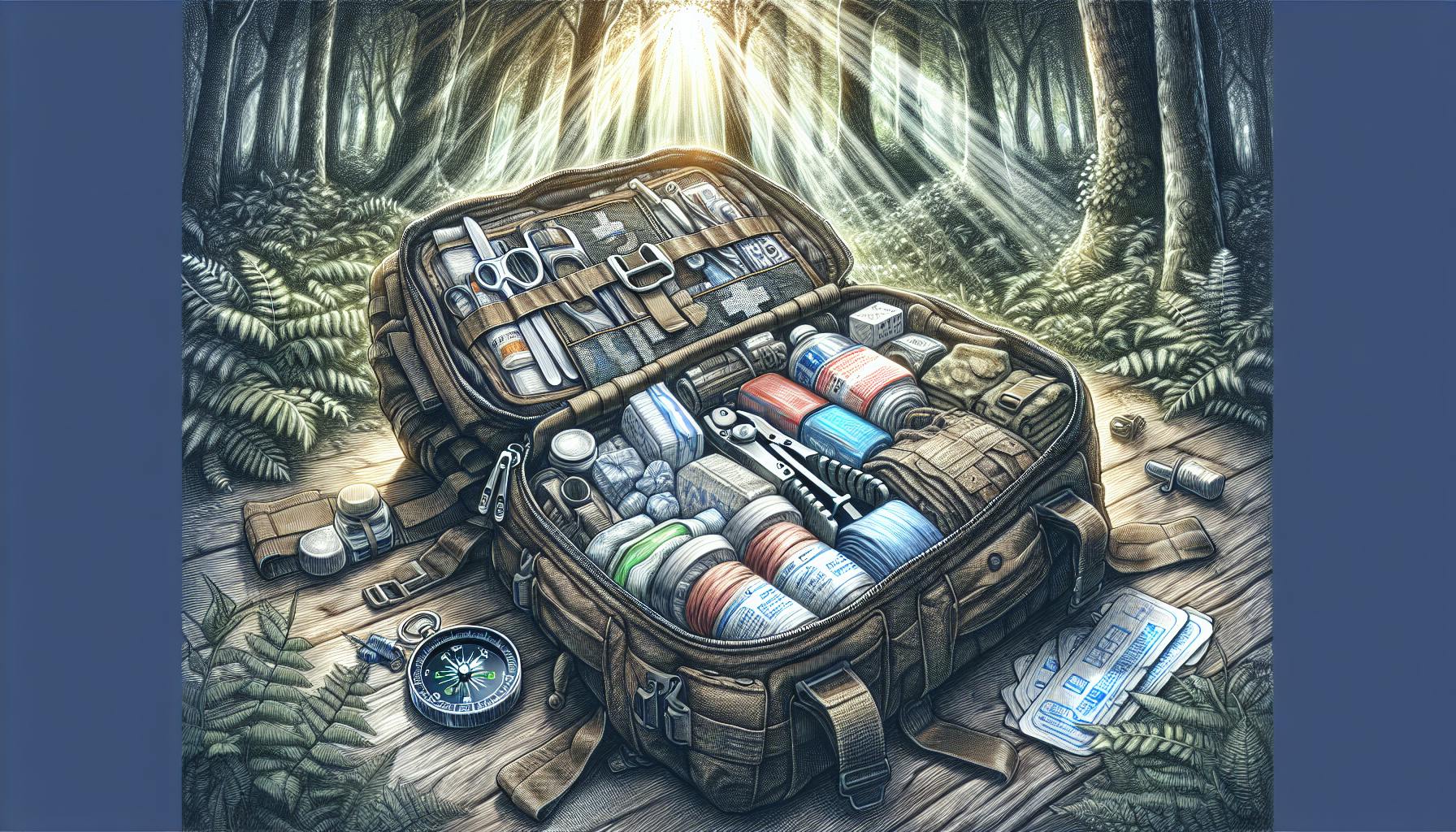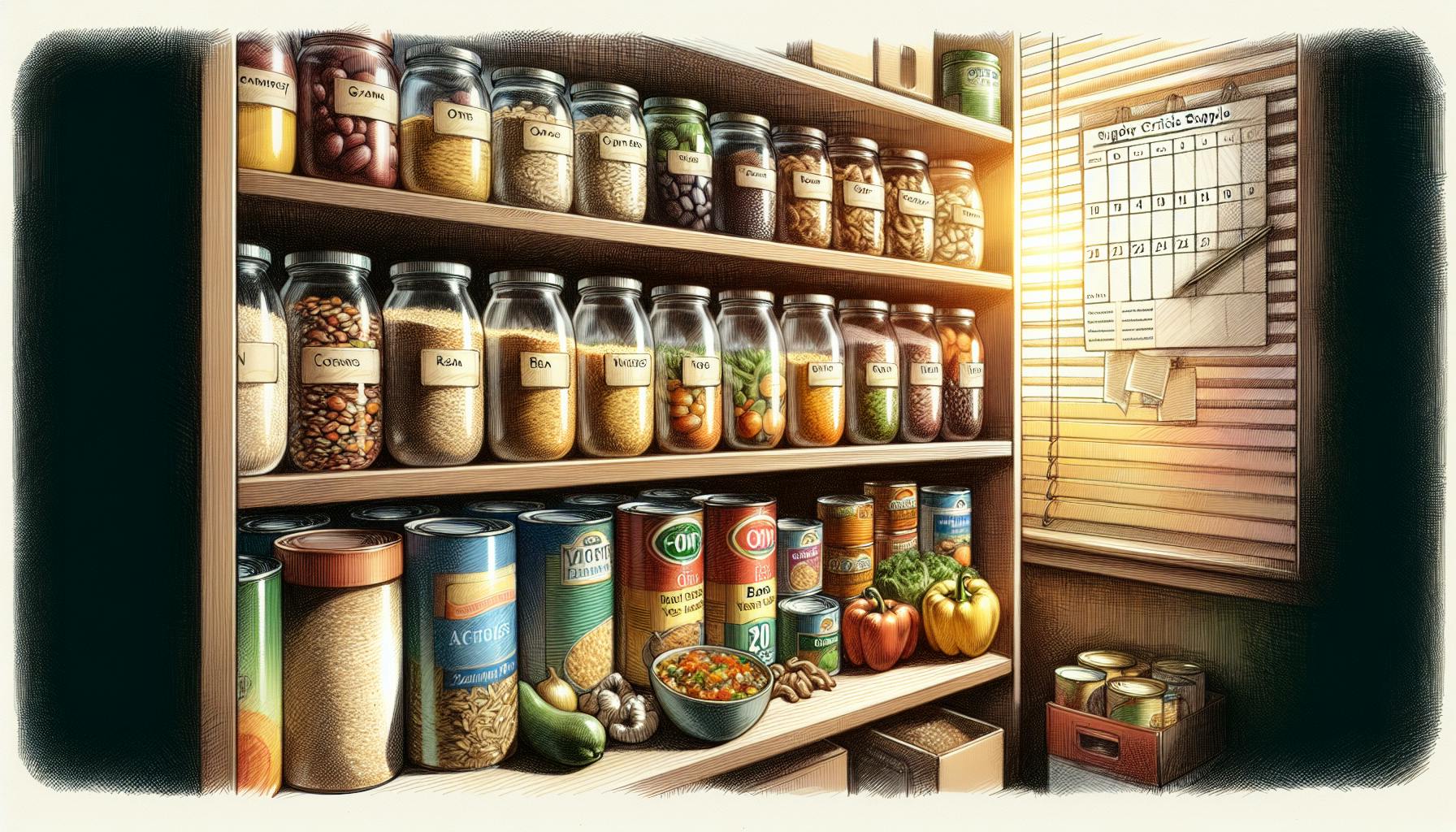No one would disagree that having emergency food supplies ready is crucial for unexpected disasters or hard times.
This article will guide you through key considerations for selecting the most practical and nutritious survival food packs to meet your household's unique needs.
You'll learn how to determine ideal calorie counts, compare leading brands for taste and dietary accommodations, and optimize kits for storage space and budget.
Introduction to Survival Food Packs
Survival food packs contain shelf-stable foods designed to sustain people during emergencies when normal food supplies are disrupted. They provide the calories, nutrients, and variety needed to support health. Key factors when selecting survival food include:
Defining Survival Food Packs
Survival food packs contain non-perishable, nutrient-dense foods like freeze-dried meals, MREs, grains, and more. They come in ready-to-eat formats or as base ingredients to prepare meals yourself. These packs cater to various group sizes and aim to provide well-balanced nutrition to support health during crises.
Who Survival Food is For
Survival food aids preparation for various disasters and crises. It can sustain individuals, families, communities, and relief organizations. Proper planning and appropriate pack sizes ensure adequate food reserves tailored to each group's caloric needs.
Key Purchase Considerations
When choosing survival food, consider nutritional balance, calorie density, shelf life, pack weight, meal variety, and special dietary needs like allergies. Prioritize calories and nutrients first, then optimize for portability, shelf life, and food enjoyment. Accommodating specialized diets ensures the food supports health for all users.
What are the best survival foods to pack?
When preparing survival food packs, it's important to have a variety of nutrient-dense foods that don't require refrigeration and can last a long time in storage. Here are some of the best options to include:
Clean Drinking Water
Having an emergency supply of clean drinking water is absolutely essential. Water purification tablets, portable water filters, and sealed bottled water are good choices.Aim for at least one gallon per person per day.
Jerky and Dehydrated Meats
Dehydrated and cured meats like beef jerky, pemmican, or tuna packs are lightweight protein sources perfect for survival kits. Look for low or no salt varieties.
Canned Fruits, Vegetables, Beans
Canned produce like carrots, green beans, and peaches supply key vitamins and minerals. Canned beans are a good source of plant-based protein. Focus on low-sodium or no salt added versions.
Canned Soups and Stews
Ready-to-eat canned soups and stews can provide calories, protein, veggies, and flavor. Go for reduced sodium options when possible.
Crackers
Crackers made from whole grains can provide carbohydrates and fiber. Consider hearty options like whole wheat crackers or multi-grain varieties.
Dried Fruits
Dried fruits like raisins, cranberries, and apricots offer antioxidants and natural sweetness. Prioritize unsweetened varieties to avoid added sugar.
When packing survival food, be sure to consider dietary restrictions, caloric needs, and nutrition. Having a diverse mix of non-perishables can help sustain you in an emergency until help arrives.
What do you put in a survival kit for food?
When building a survival kit for food, it's important to include a variety of non-perishable, high-calorie options that meet your dietary needs. Here are some key items to have on hand:
Canned and Preserved Foods
- Canned meats (tuna, chicken, spam)
- Canned beans, vegetables, and fruits
- Canned soups and stews
- Peanut butter and nut butters
- Dried fruits and vegetables
- Beef jerky
Canned and preserved foods are shelf-stable and packed with protein, carbs, vitamins, and minerals. Go for low-sodium options when possible.
High-Calorie Snacks
- Granola and protein bars
- Nuts and trail mixes
- Crackers
- Hard candy
Pack high-fat, high-calorie snacks to provide an energy boost. These compact foods are easy to store and will keep you fueled when activity levels are high.
Specialty Foods
- Meal replacement shakes
- Freeze-dried meals
- MREs (Meals Ready to Eat)
Specialty survival foods like MREs are lightweight and have a long shelf life. However, they can be expensive compared to canned goods. Only include what fits your budget and needs.
Cooking Essentials
- Can opener
- Mess kit
- Cutlery
- Portable stove
- Fuel tablets/canisters
Don't forget basic cooking gear for heating up meals and boiling water. Items like pocket knives, pots, and fuel sources allow you to prepare a hot meal.
Tailor your food survival kit to your dietary preferences, restrictions, expected duration of emergency, and number of people. The key is having 2-4 weeks' worth of non-perishable nutrition on hand. Routinely cycle out items before they expire.
Why is Costco selling emergency food kits?
Costco selling emergency food kits makes a lot of sense when you consider their business model and customer base. Here are some of the main reasons why Costco offers these types of products:
Meeting Customer Demand
Costco prides itself on carrying products its members want and need. As interest in emergency preparedness and self-reliance grows, Costco is responding to customer demand by providing food kits. These kits offer good value and can feed a family during a crisis.
Providing Essential Supplies
Food is one of the most essential supplies for emergency preparedness. Costco realizes this and stocks their warehouses with nutritious food kits to help families be ready for disasters. This shows they want to be a go-to resource.
Good Value
The Costco ethos focuses on offering quality products at a good price. Their food kits are very competitively priced compared to other sellers. The $6,200 Nutristore kit can feed a family for a year, which breaks down to just $17 a day. This kind of value appeals to Costco shoppers.
Broadening Product Range
While not their core offering, survival food kits help Costco expand its product inventory. Having these kits brings in new sales and introduces customers to other Costco products they may not have considered before. It's a strategic product line addition.
In summary, Costco sells emergency food kits because of customer demand, their focus on essentials, delivering value, and diversifying product lines. As interest in emergency preparedness grows, Costco is positioning itself as a reliable supplier.
What food should be stockpiled?
When building your emergency food supply, it's important to have a variety of nutrient-dense foods that will sustain you and your family in a crisis. Here are some of the most essential types of survival foods to stockpile:
Canned and Dried Proteins
Canned varieties of meat, beans, fish, and poultry are shelf-stable proteins that are packed with nutrients. Prioritize lean options like chicken, salmon, tuna, beans, and low-sodium deli meats. Nut butters and dried meats like jerky also store well. These foods provide a solid protein base for your stockpile.
Fruits and Vegetables
Fruits and veggies stored in cans, pouches, or dehydrated formats offer key vitamins and minerals. Focus on nutrient-rich picks like tomatoes, carrots, spinach, mixed vegetables, beans, and a variety of canned fruits in juice. Dehydrated veggies and freeze-dried fruit are lightweight and last for years.
Grains, Cereal, Crackers
Rice, oats, pasta, flour, and dry cereal provide carbohydrates and fiber. Opt for whole grains when possible. Include crackers, granola bars, and trail mixes for snacking. Choose options with longer shelf lives.
Comfort Foods
Don't forget about morale-boosting comfort foods like chocolate, coffee, tea, honey, peanut butter, jam, and spices. These items provide variety and help improve mood in stressful situations. Prioritize vacuum-sealed and freeze-dried options.
Tailor your stockpile to your family's needs, taking into account dietary restrictions, caloric requirements, and taste preferences. Aim for a diverse mix of essential nutrition sources. Rotate and replenish items as you go.
sbb-itb-b932644
Understanding Caloric and Nutritional Needs
Assessing the caloric and nutritional requirements is essential for choosing the best survival food kits, ensuring the sustenance of individuals or families during emergencies.
Basic Calorie Guidelines
On average, sedentary women need 1,600-2,400 calories per day, while men need 2,000-3,000. Active individuals require more. When preparing survival food packs, it's important to understand these basic caloric guidelines.
Customizing for Households
When choosing an emergency food supply for a family of 4 or more, calculate each member's needs and purchase supplies accordingly. For example, an average 10-year-old may need 1,800 calories daily, while a teenager requires 2,000-2,500. Kids generally have lower caloric needs than adults.
Planning for Duration and Quantity
Stock up on more sustenance for longer-term crises. For example, a pack lasting 30 days requires 900-1,200 calories per person daily. So for a family of 4, that's 12,600 calories needed every day. Planning the duration and quantity is key.
Selecting the Best Survival Food Kits
When building your emergency food supply, investing in high-quality survival food kits is essential. As you evaluate options, here are some key factors to consider:
Evaluating Shelf Life and Preservation
- Prioritize kits with at least a 25-year shelf life. The longer the better, since you likely won't tap into supplies regularly.
- Ensure the packaging adequately protects against light, moisture, insects, and rodents. Mylar pouches and airtight containers work best.
Taste, Preparation, and Meal Variety
- Seek out tasty, familiar meals you'll enjoy eating in an emergency. Morale is important.
- Choose kits with easy preparation like adding hot water or ready-to-eat options.
- Look for a wide variety of entrees, sides, snacks, and drinks to prevent menu fatigue.
Nutritional Content and Balance
- Check the nutritional labels for balanced macronutrients (protein, carbs, fat) plus key micronutrients.
- Prioritize higher protein content, around 15-20g per serving. Essential for strength and recovery.
- Seek kits fortified with extra vitamins C, D, iron, calcium, potassium for nutritional insurance.
Portability and Storage
- If evacuating, compact, lightweight kits are crucial for mobility.
- For stationary storage, heavier buckets work fine and may be more economical.
- Ensure you have adequate space to store several months' supply per person.
By evaluating survival food kits across these criteria, you can determine the ideal emergency food to meet your family's needs, budget, and disaster preparedness plans.
Meeting Special Dietary Needs
Addressing specific dietary requirements is critical when selecting survival food packs, especially for those with health conditions or preferences such as gluten-free, vegan, or allergy-friendly options. Having options that meet a variety of dietary needs ensures your family is properly nourished in an emergency.
Diabetic and Low-Sodium Meal Options
For people with diabetes or hypertension, choose low-carb, low-sugar, higher protein survival food packs with limited sodium. Look for meals under 500 mg of sodium per serving. Ensure the carbohydrate content fits within your doctor's recommendations.
Some good emergency food supply options include:
- Augason Farms Emergency Food Supply Gluten-Free Entree Variety Pail
- Mountain House Just in Case Gluten Free Bucket
- Wise Company Gluten Free Freeze Dried Grab and Go Food Kit
Gluten-Free and Allergen-Free Kits
Accommodate gluten intolerance, nut allergies, and other diet-dependent needs through specialty meal kits. Many companies now offer gluten-free, peanut-free, and tree nut-free survival food to accommodate common allergies and celiac disease.
Choose kits with a wide variety of entrees to avoid taste fatigue. Prioritize additional protein sources like salmon, chicken, and plant-based options.
Vegetarian and Vegan Emergency Kits
Plant-based survival food packs feature textured vegetable protein and legume-heavy ingredient makeups. Choose options with a diversity of grains, legumes, nuts, seeds and produce to meet nutritional needs.
Some top picks include:
- Augason Farms 30-Day Vegetarian Emergency Food Supply Bucket
- Wise Company Gluten Free Vegetarian Emergency Food Supply
- Mountain House Vegetarian Bucket
With the right emergency food supply, you can meet any dietary needs, restrictions, or preferences your family may have. The key is variety, balance, and personalization.
Assessing the Best Survival Food Kits on the Market
When building an emergency food supply, it's important to choose high-quality survival food kits that meet your needs. As you compare options, here are top picks to consider based on criteria like shelf life, calories, taste and affordability.
Wise Company: A 25-Year Emergency Food Supply Leader
With a 25-year shelf life, Wise Company's food buckets provide long-term viability. Their meals average 300-400 calories each to sustain energy in an emergency. Gluten-free and vegetarian options accommodate dietary needs. Though affordable, some find the taste lacking compared to alternatives. Overall, Wise Company is a reliable choice for nutritious, calorie-dense, long-lasting food reserves.
Mountain House: The Classic Taste of Survival
Known for better taste, Mountain House meals provide energy-efficient nutrition. With a 30-year shelf life, their bucket provides breakfasts, entrées and sides averaging 350-500 calories each. While pricier and lower in calories than some alternatives, Mountain House offers tasty, easy-to-prepare meals from a classic brand.
Augason Farms: Sustaining a Family of 5
Accommodating special diets, this kit offers gluten-free, dairy-free and vegetarian options with a 30-year shelf life. With enough food for one person for 30 days or a family of 5 for a week, it meets almost all nutritional needs. Though it lacks meat variety, you can supplement with additional protein sources. For larger families with diverse needs, Augason Farms presents an efficient, nutritional emergency food solution.
Key Takeaways for Choosing Survival Food Packs
When selecting survival food packs, it's important to consider caloric needs, shelf life, dietary restrictions, and the practicality of the kit. Here are some key tips:
Determine Calorie Requirements
- Calculate daily calories for each family member based on age, gender, activity level, and potential crisis duration. This will help determine the appropriate food pack size.
- Adult women generally need around 1,800 calories per day, while adult men need 2,200-2,800.
- Active individuals and growing children need more calories.
Compare Brands and Options
- Look at shelf life - many kits offer 5+ or even 25+ year shelf lives. Longer is better for emergency preparedness.
- Evaluate nutritional balance and variety of meals in the pack. More variety means less food fatigue.
- Consider pack weight and portability. Some are designed to stay in place, while others can be transported if needed.
- Taste test or read reviews on the meals. Food fatigue sets in fast if you have to eat unappealing foods for weeks.
Accommodate Special Diets
- Those with medical conditions like diabetes, allergies, etc. need supplies that fit dietary guidelines and restrictions.
- Customize kits or purchase specialized packs to avoid health complications.
- Pack additional compatible snacks to supplement meals if needed.
When selecting a survival food pack, be sure to consider each family member's unique caloric needs, shelf life, and any dietary restrictions. Comparing multiple options can help find the right balance of practicality, nutritional variety, and affordability.


